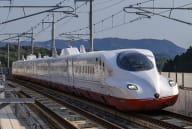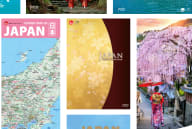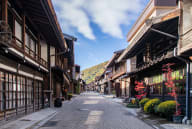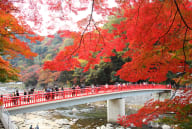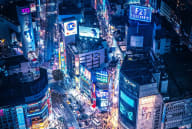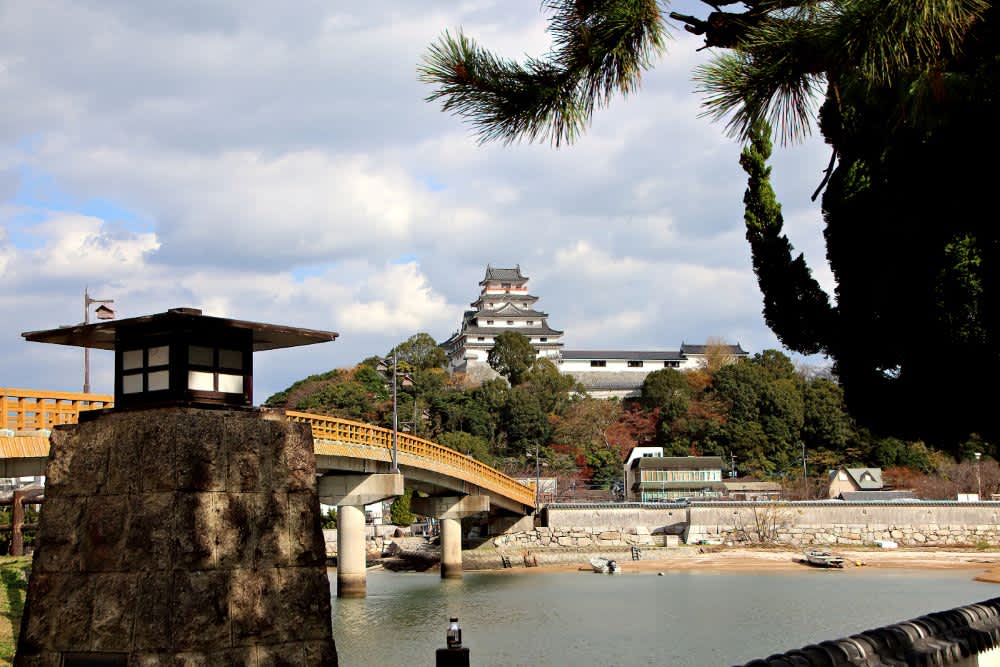
From the moment we arrived at the Karatsu train station, bedecked with posters celebrating the recent Karatsu Kunchi (festival), until our last walk past the purple night-glow surrounding Karatsu Castle magnificently perched on Mt. Mitsushima, Karatsu grabbed our attention, feted our taste buds, and created many warm memories along the way.
The city of Karatsu in Saga Prefecture, on the north coast of Kyushu, is more than rooted in history. In fact the name itself (kara - roots; tsu - port) refers to the ancient centre of trade with China or Korea. But today, it’s the visual history that grabs so much attention, starting with the celebrated annual festival that takes place in early November. And for those visitors who may not want to compete for viewing space at Karatsu Kunchi with up to 500,000 others, the Hikiyama Exhibition Hall, right by the train station, is a great alternative.’Hikiyama’ refers to the fourteen historic floats and each is on display, for viewing and photos, through clear glass windows. On the second floor there is a video of the festival showing the teams of roughly 150 people, pulling the floats through the streets, and there are also histories of each float. For example, Kinjishi, the Golden Lion was built in 1847 using gold leaf, and is reputed to be the largest lion head in Japan. Shachi, the Tiger –head Orca built in 1876 by a seafaring community paid tribute to a mythological creature who could remove fire by spouting water.
Karatsu Ware, a style of ceramics with an ash glaze, produced in Saga prefecture, is on display next to the Exhibition Hall.
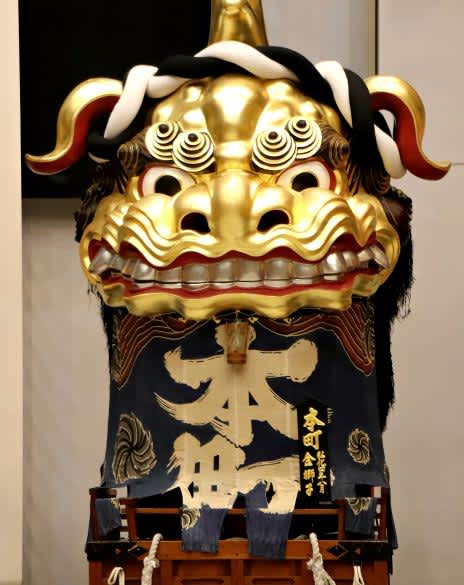
A local bus took us near our accommodation, the aptly named, Riverside Hotel Karatsu Castle but noted for its location on the Matsuura River, its proximity to Nijinomatsubara, the 360-year old Black Pine Forest along the sandy beach, and the beautiful Castle on the mountain, just outside the hotel front door. We received a very warm greeting on arrival, a welcome beer, a comfortable tatami room with a view of the river and the city, and a welcome hot bath!
With the opportunity to view Karatsu Castle as the sun was setting, we walked the 15 minutes to the city centre, and easily found Daihachiguruma, a popular, friendly izakaya with fantastic food prepared by the owners Akihiro and Mihoko Fujino. Along with Manrei, a delicious Saga Prefecture sake, we enjoyed assorted sashimi, marinated oyster, tsukune (grilled, skewered chicken meatballs), Squid Shumai (steamed dumplings-a local speciality), deep-fried oysters and fish cakes. Excellent, tasty, ultra-fresh food!

And the next morning, we were on a local bus to see where the squid shumai originated. We visited the Yobuko morning market, about 30 minutes away. The market bustles on the weekend, but still, a good number of stalls were open on this Tuesday morning, selling clothing, root vegetables and cabbage, dried fish and squid, and hot steaming squid shumai, One woman was selling grilled Sazae, or Turban shells. They were a bit chewy but had a sweet ‘mollusk’ taste. The town itself is small with fishing boats docked in the port and the Yobuko Ohashi Bridge, listed as one of Saga’s 100 top scenic attractions, spanning some of the islands in the Genkai Sea.
But it was time to return to Karatsu City to explore the Castle mount. Karatsu Castle was built between 1602 and 1609 and was referred to as “Dancing Crane Castle” (Maizuru-Jo) based on an imaginative resemblance to a crane. The impressive stonework rises directly out of Karatsu Bay, creating a natural defensive moat. Similar to many castles in Japan, this one was reconstructed and completed in 1966. The interior exhibits relate to the history of Karatsu and the various clans that became lords of the Castle. The 5th floor observation galley affords striking views of the city, the beaches, the islands, and the pine forests. The Castle grounds include Cherry Blossoms and Wisteria, in season, with more superb views of the surrounding area.

And once again the sunset was reflected in the natural white colour of the castle, followed by the purple lights of the evening, showcasing the notable castle landmark.
Karatsu is a wonderful city to walk or rent a bike and explore. It’s an inspiring blend of nature, history, festivals, culture, markets and food, and the friendly people you meet add that memorable element to the Karatsu experience.
https://www.karatsu-kankou.jp/en/sp/guide/aboutkaratsu/
About the writer
Steve Gillick has been involved in the Canadian travel industry for over 40 years in various roles, including tour guide, tour operator, President of the Canadian Institute of Travel Counsellors, travel writer, and author. He has explored 85 countries and territories, with 20 journeys to Japan and 60 published articles about the country. Steve is the President of Talking Travel, a consultancy specializing in skill development, association management, travel writing, and destination presentations.
The opinions expressed in the above article do not reflect the views of JNTO. All content and images are property of the writer unless otherwise specified.


























































